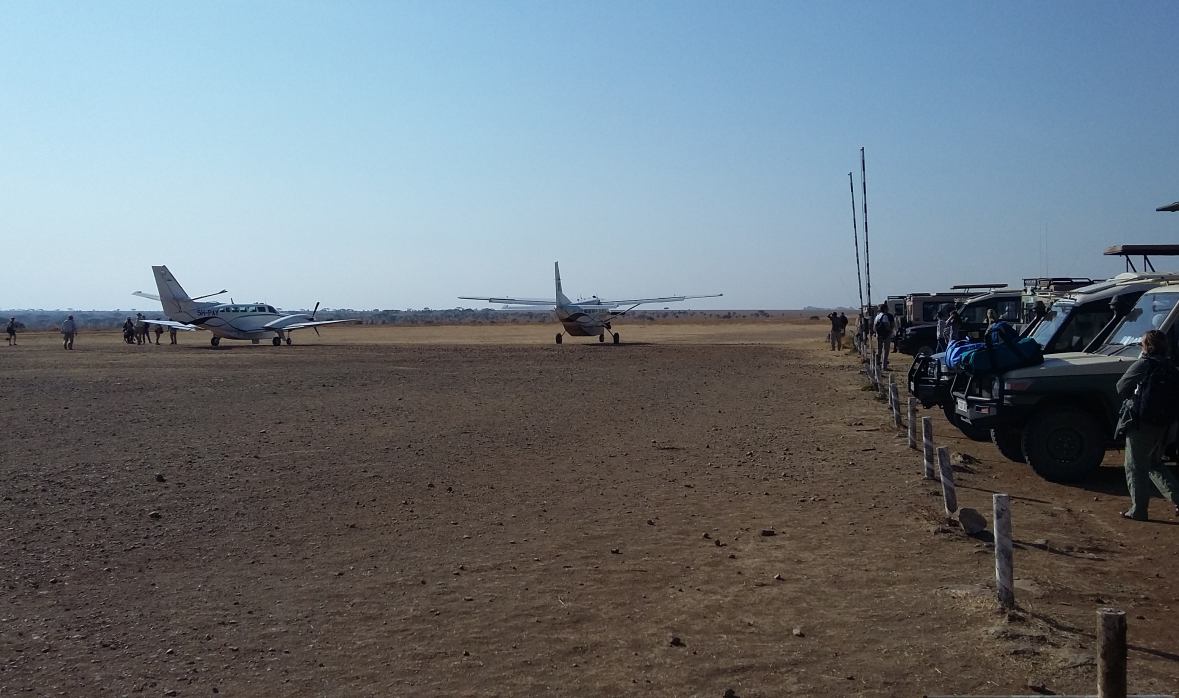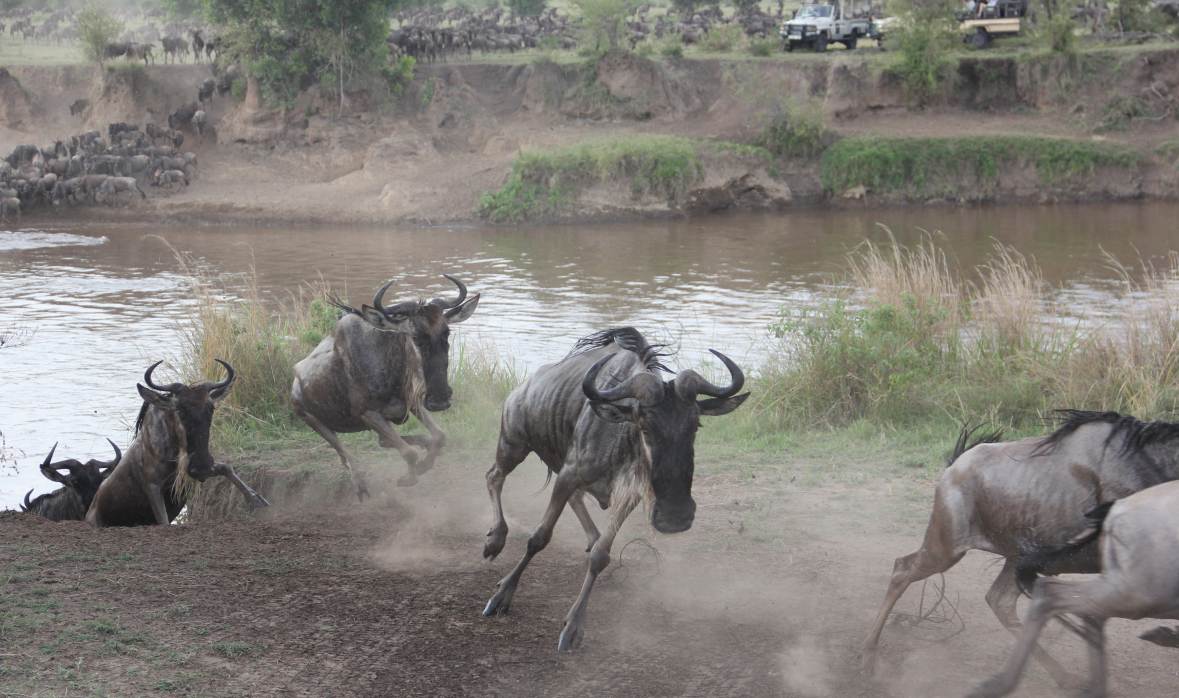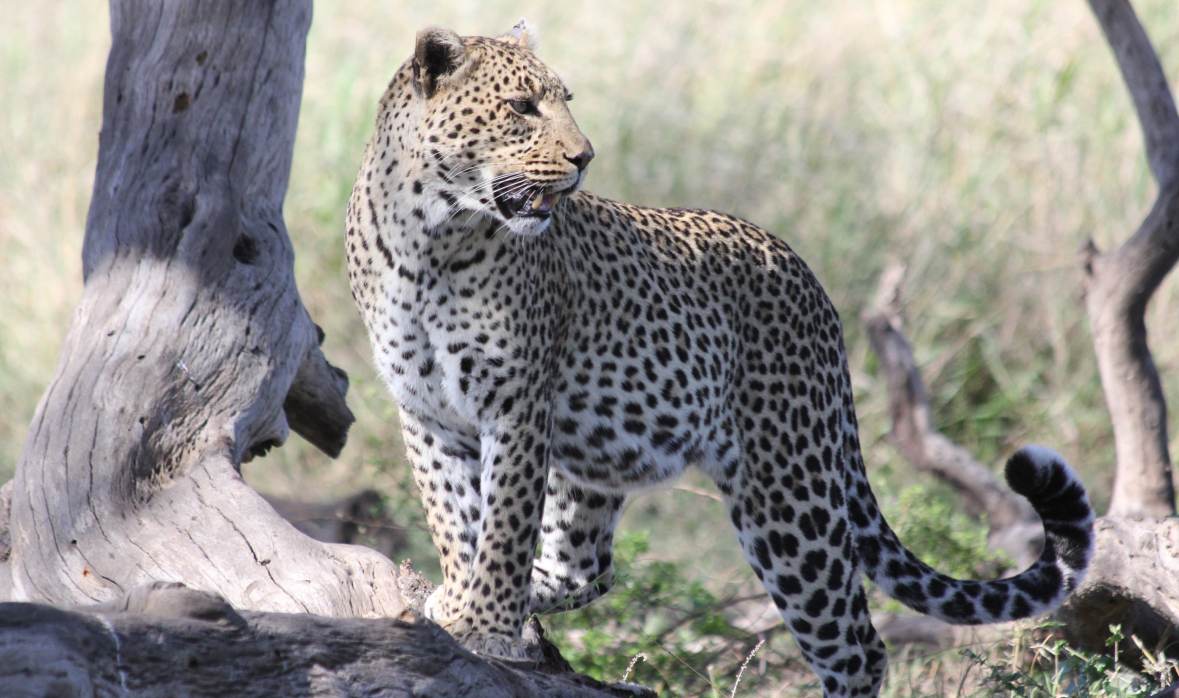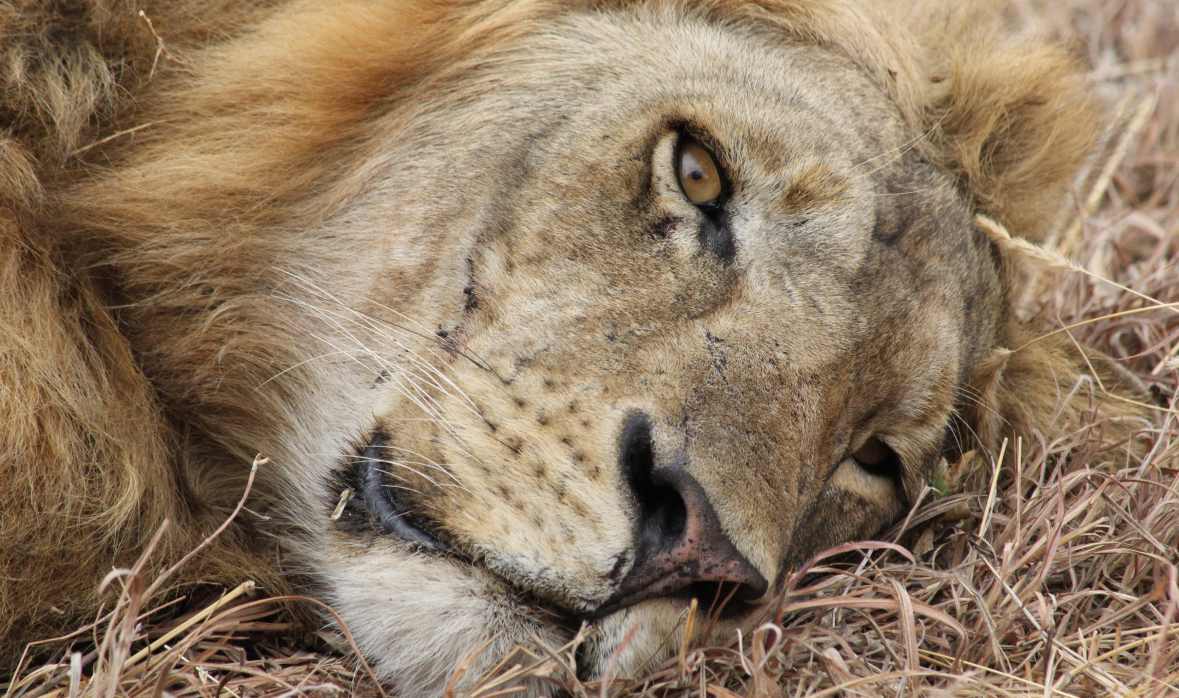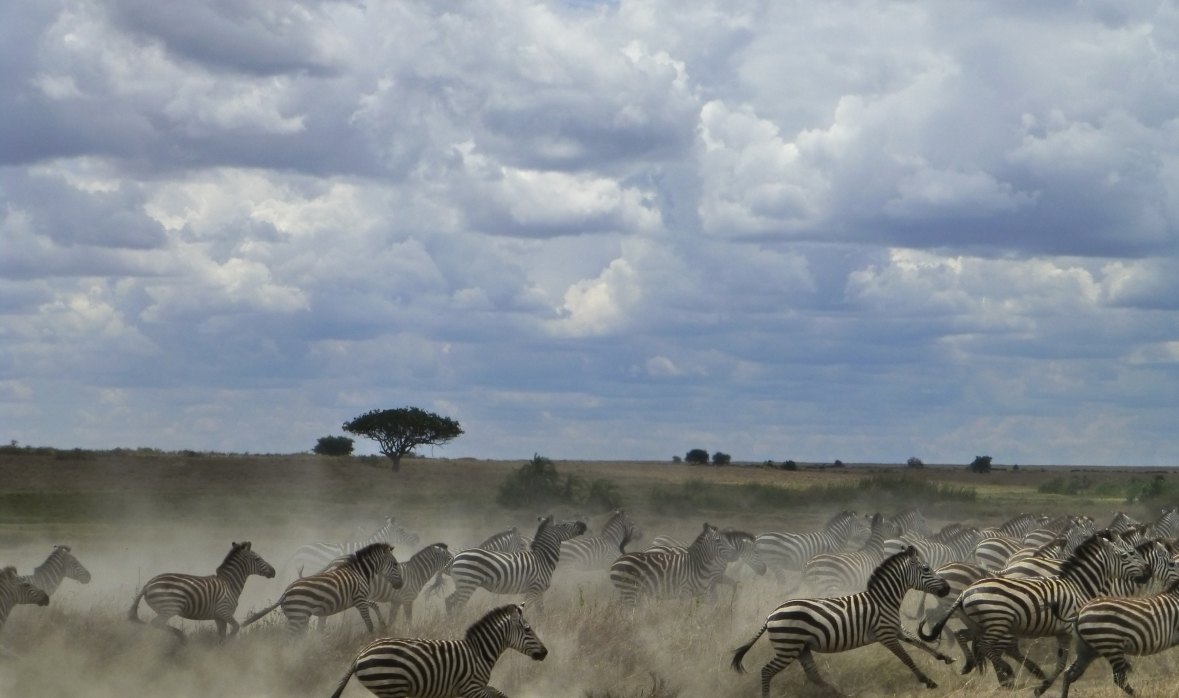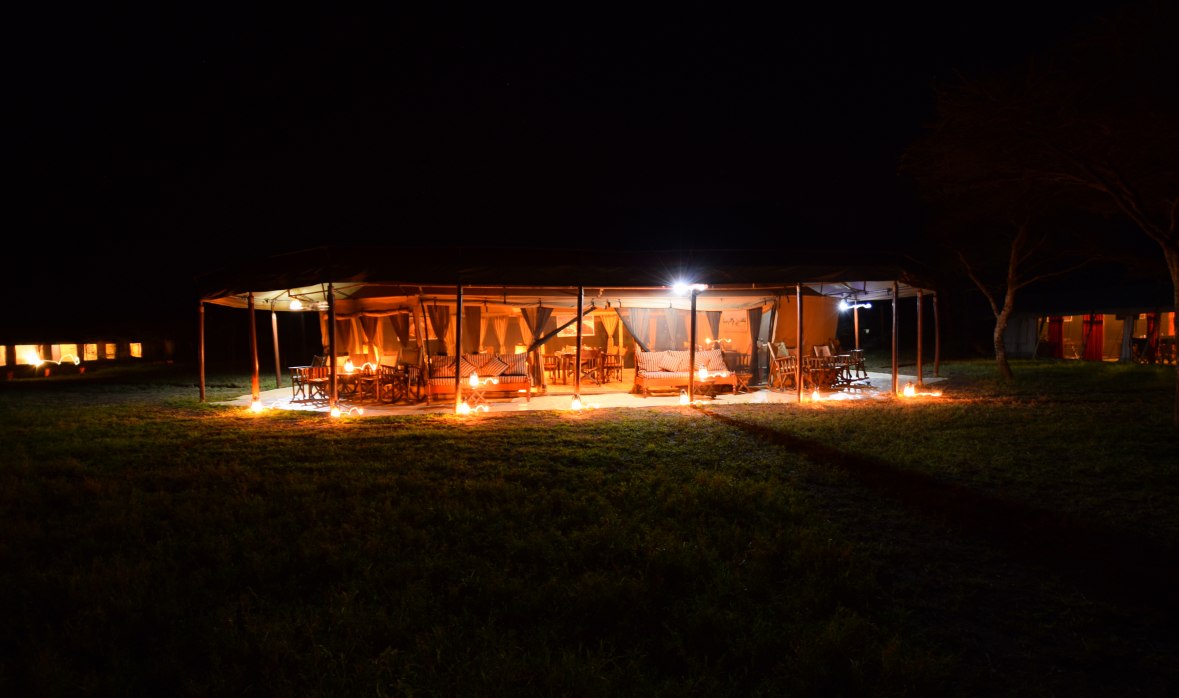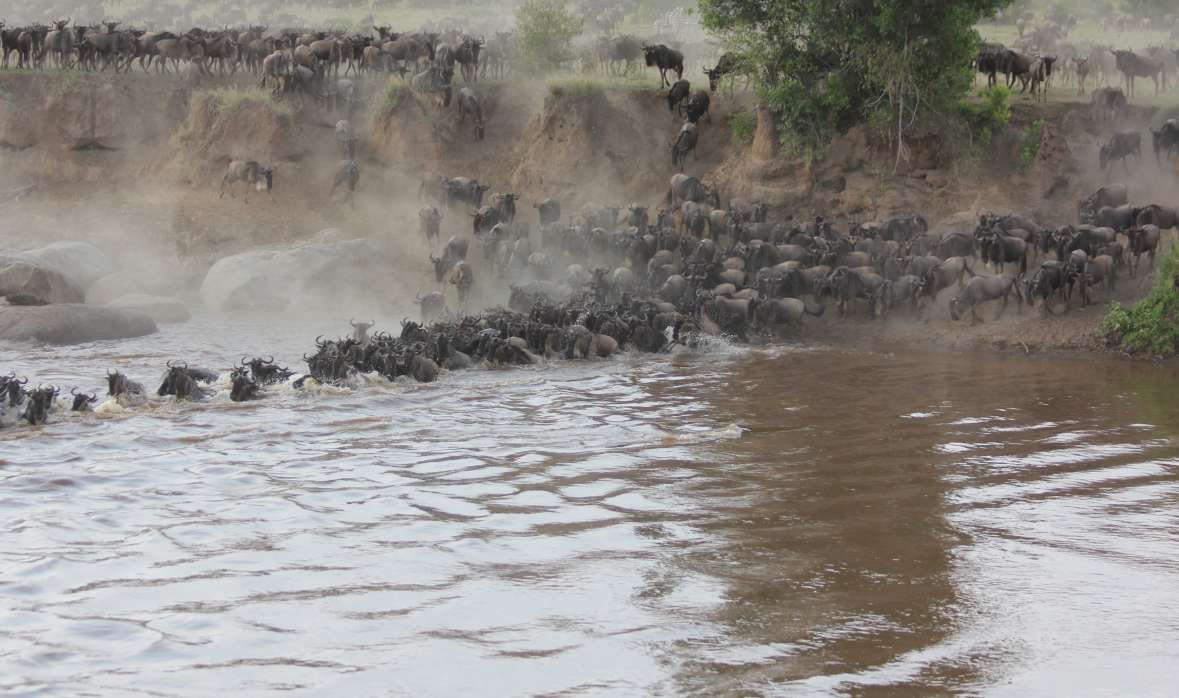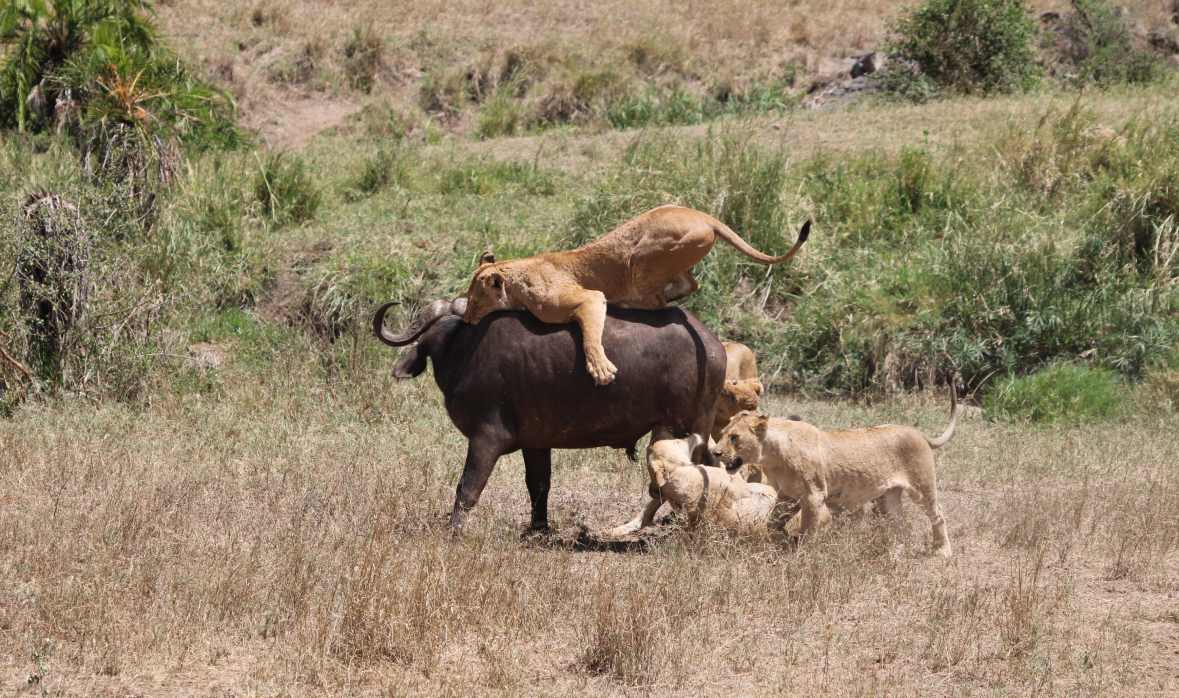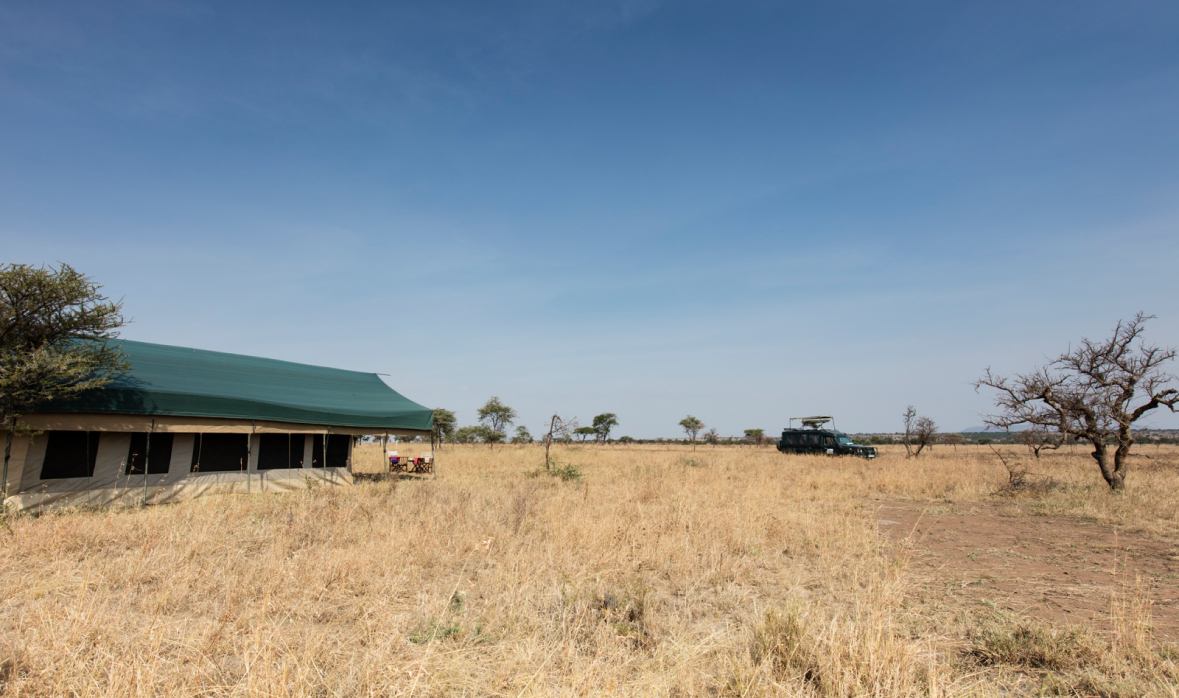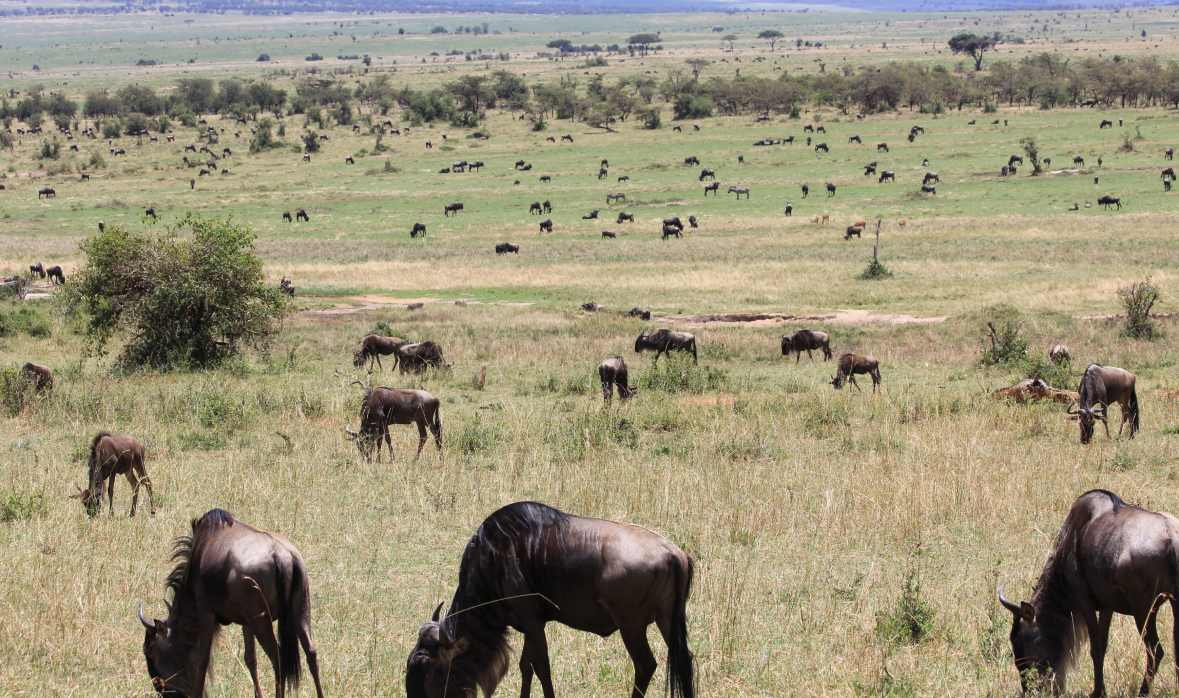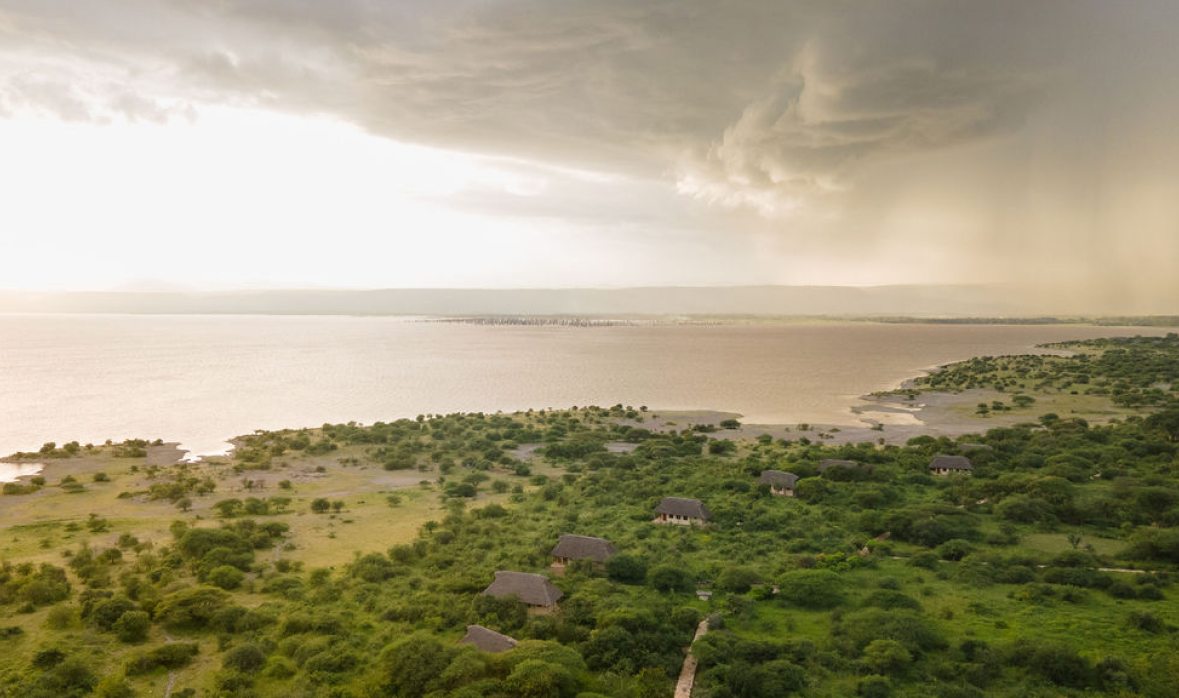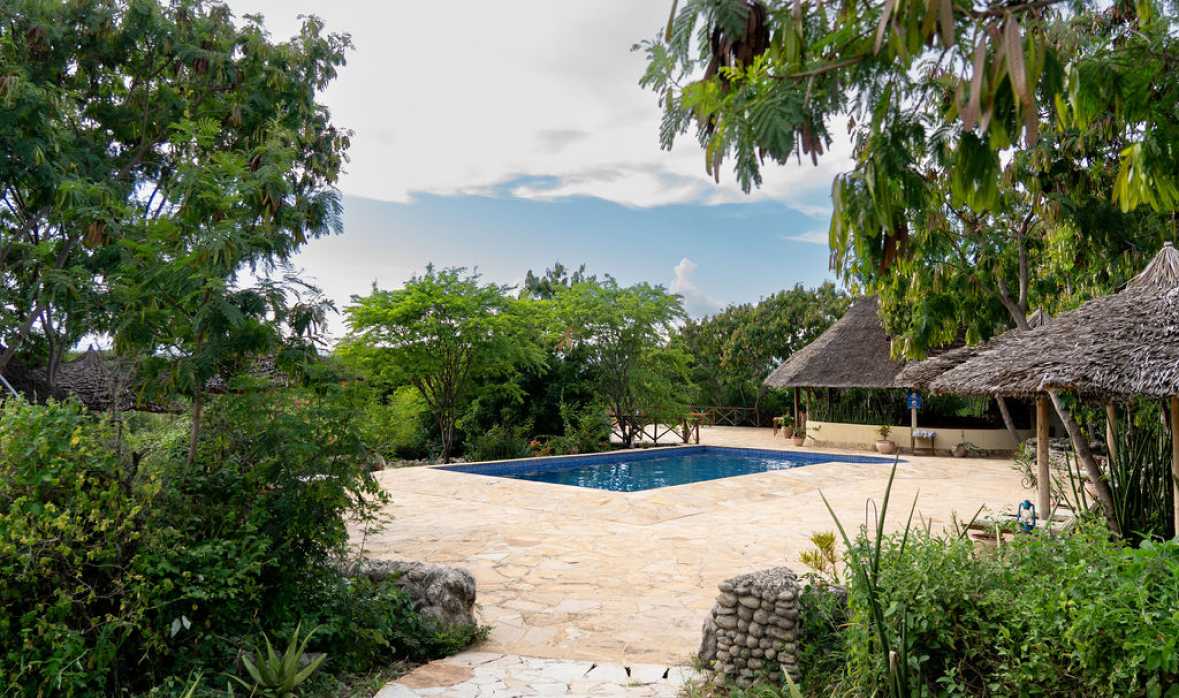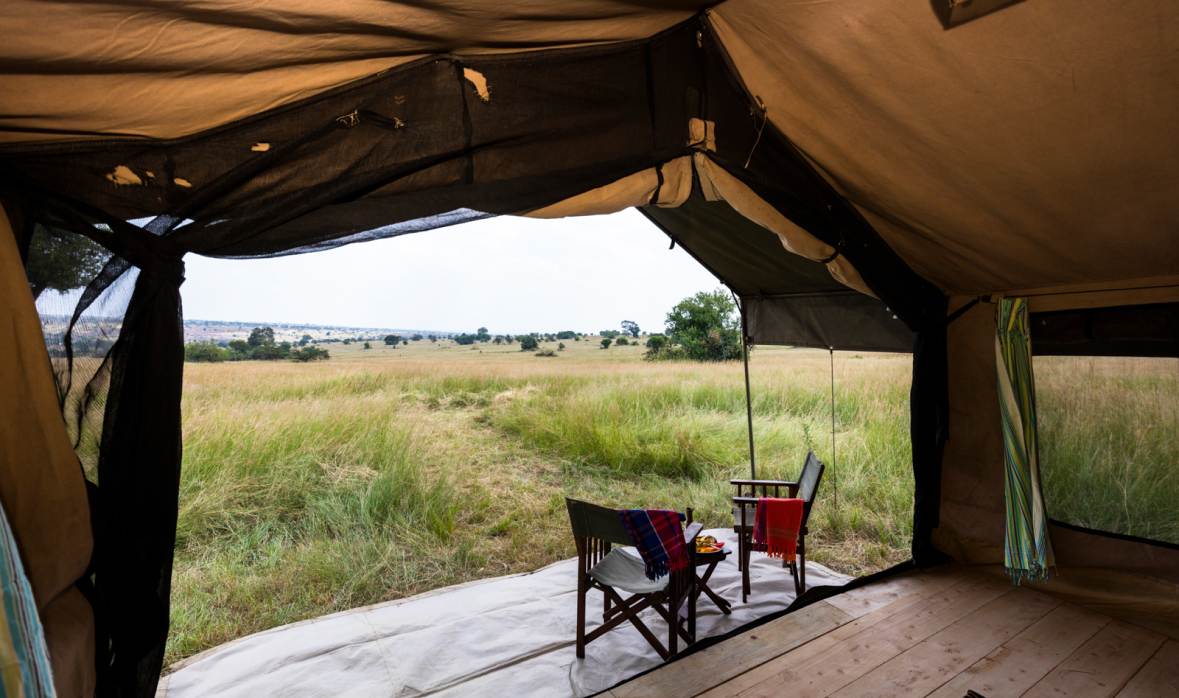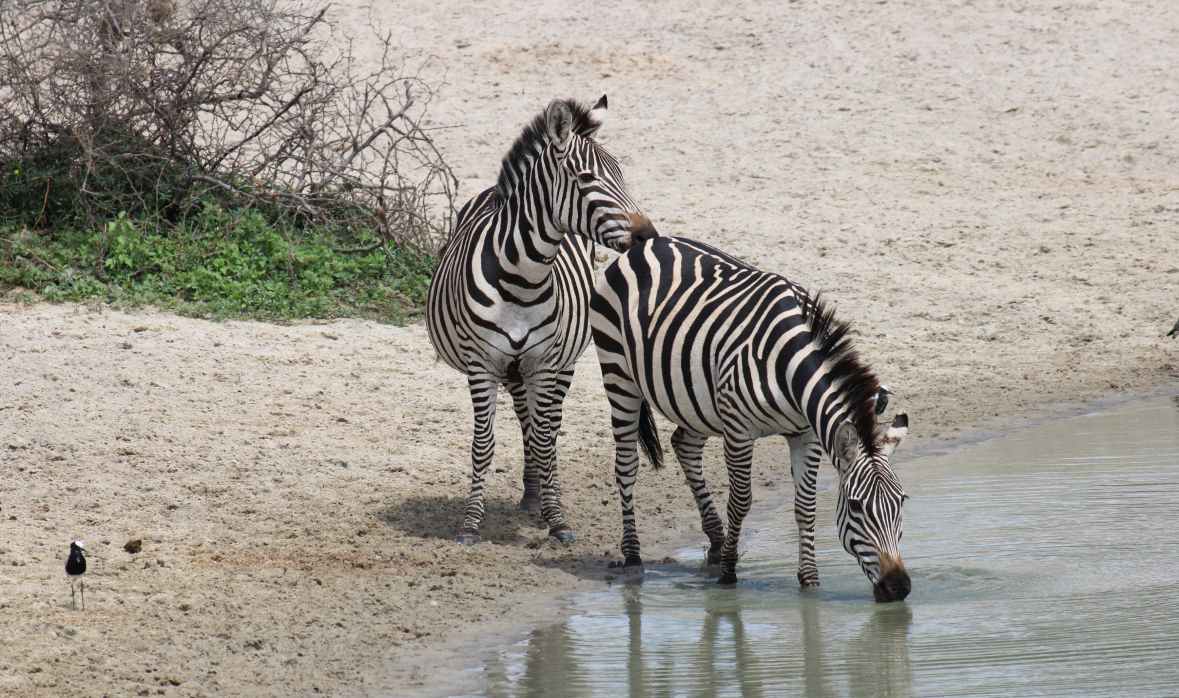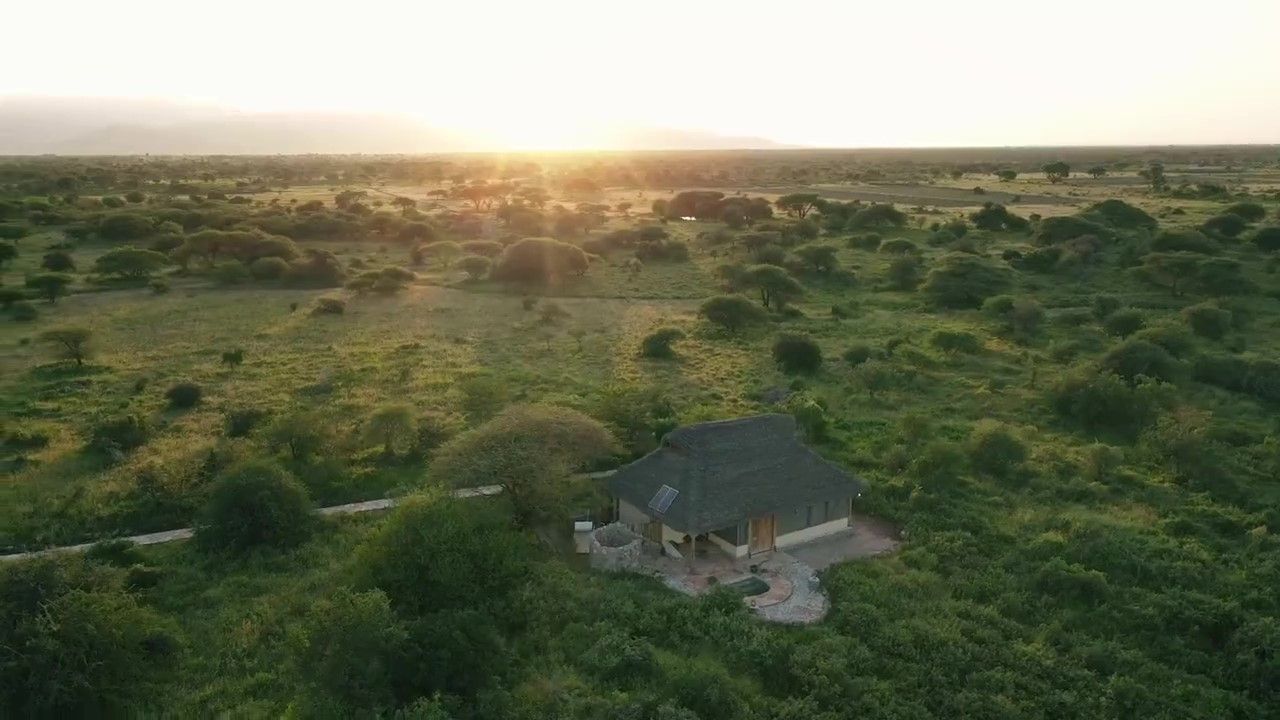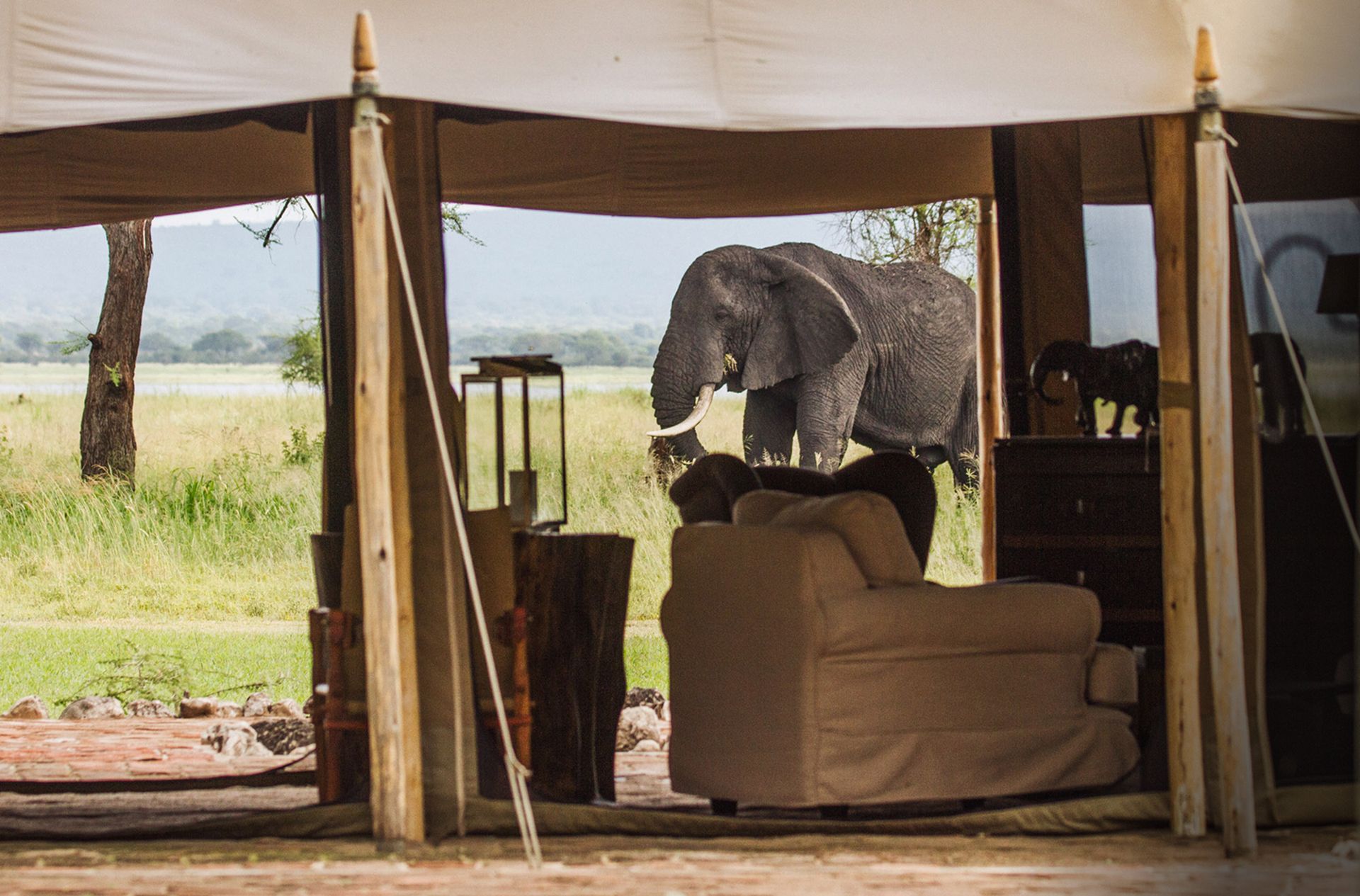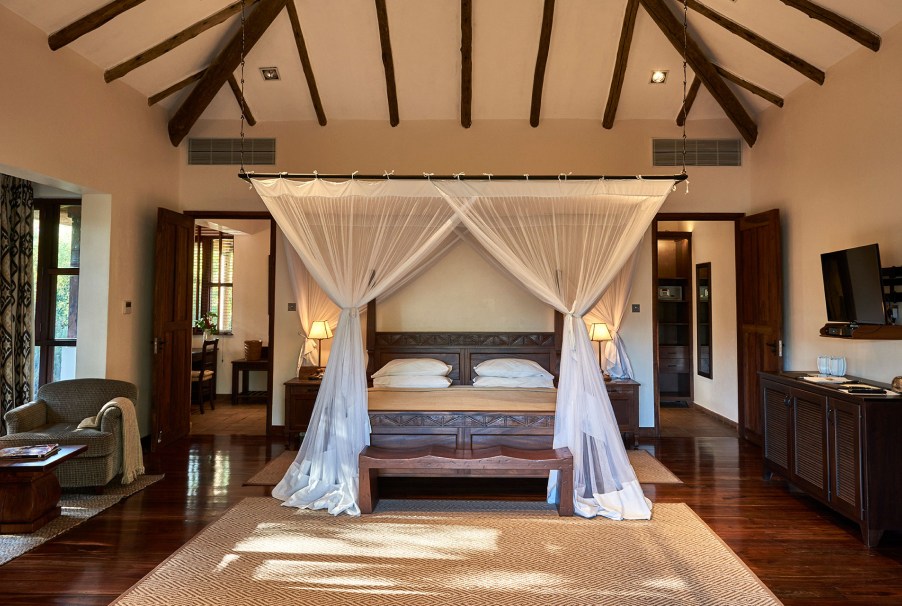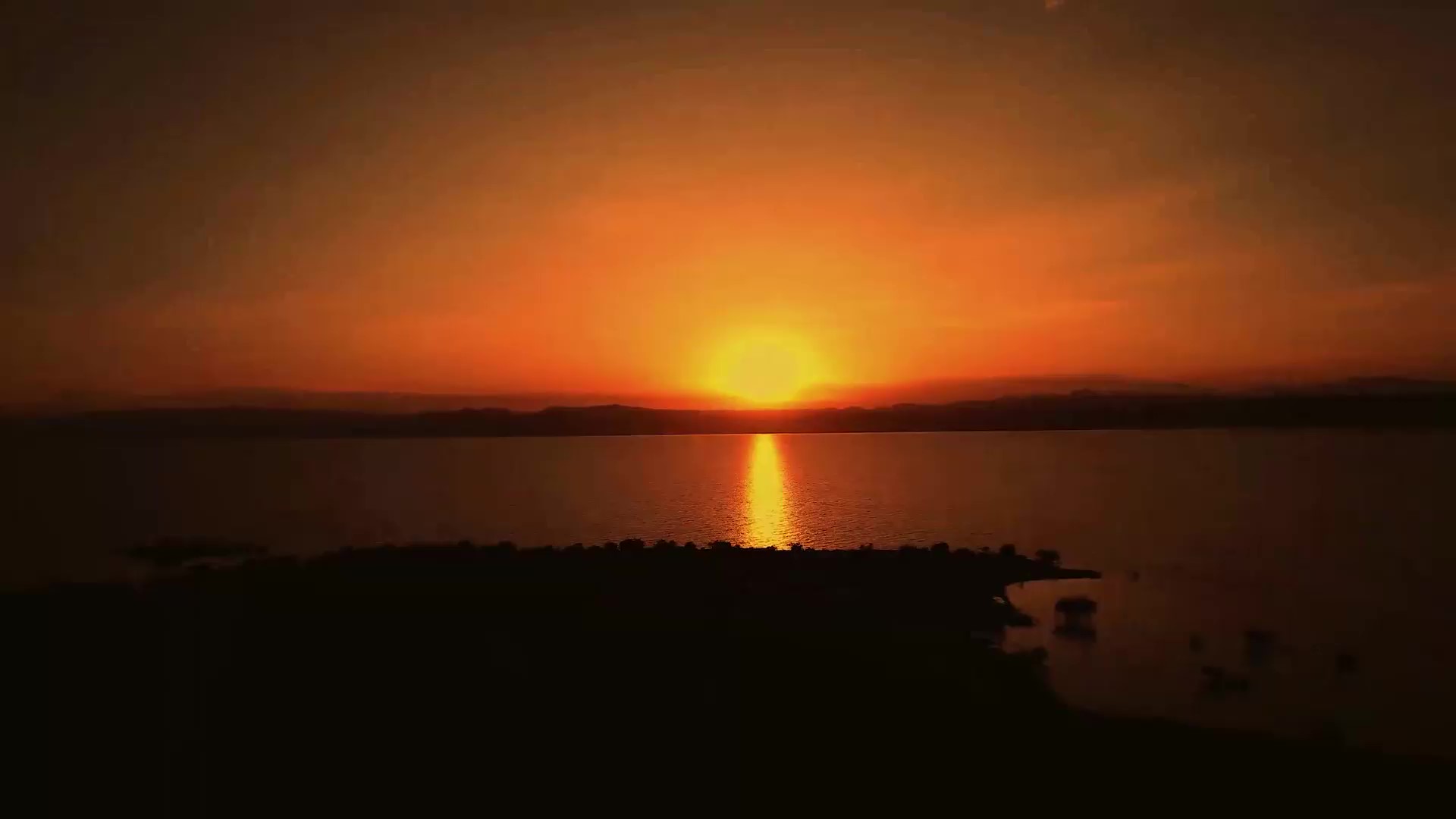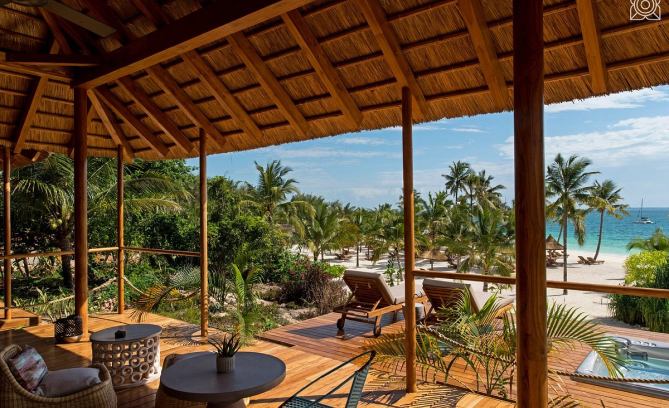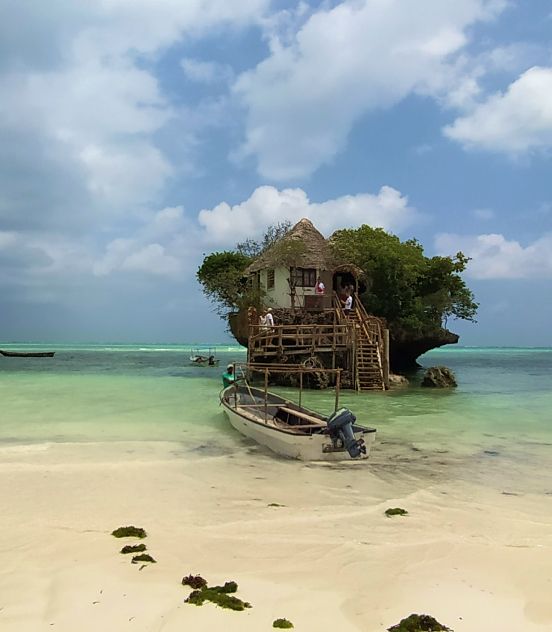The Great Migration of Serengeti National Park
From July to September, the herds of the Great Migration cross the Mara River in the northern Serengeti. You will visit three of the main national parks in the north.
Overview
This itinerary offers you a complete safari, with visits to three of the main national parks in northern Tanzania. You will explore the Manyara National Park and its salt lake, the Ngorongoro Crater, and the mythical Serengeti National Park, where you will witness the impressive Great Migration in the Serengeti in Tanzania.
July to September
7 days
From age 5
Once in a lifetime experience
Wildebeest and zebra gather in huge herds on the vast plains of Serengeti to feed on the green grass after the rainy season.
From July to September, the herds of the Great Migration move to the north of the park. It is here that, each year, more than 1.3 million wildebeest and more than 600,000 zebra cross the Mara River, marking the border between Tanzania and Kenya.
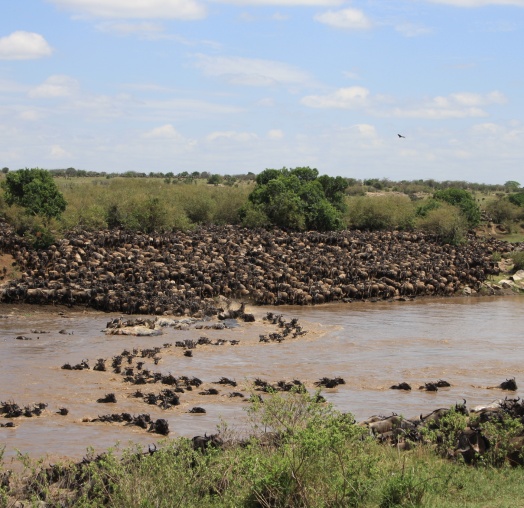

Your highlights
NIGHTS IN THE SERENGETI
Experience the comfort of a tented camp at the heart of Serengeti, a unique experience!
RETURN BY PLANE TAXI
You return to Arusha via charter plane, from an airfield in Serengeti. An incredible and comfortable experience that beats the long drive!
IN THE HEART OF THE BUSH
In this itinerary, no night of transit is planned in the city of Arusha. This allows you to experience 100% wilderness.
AT YOUR OWN PACE
Your trip is private and you are free to organise your days at your own pace. Each evening, you will check in with your guide towards the next day's journey.
Itinerary
details
Browse through our tour and contact us to tailor it to your travel needs.
Day 1: From Arusha to Lake Manyara
Welcome to Tanzania! Upon arrival you will be met by your English-speaking guide. Setltle in your private 4×4 vehicle which will be yours for the entire stay. Road to reach directly the shores of Lake Manyara and feel from the first day, in the heart of Tanzania facing the Rift Valley. Installation in your charming lodge in the middle of the bush for 2 nights.
Oremiti Lodge
Private 4x4 vehicle
Day 2: Manyara Safari Park
Full day of safari in the Manyara National Park only 15 minutes from the Oremiti lodge. Picnic at noon inside the park. Will you be lucky enough to see the lions in the trees?
Oremiti Lodge
Private 4x4 vehicle
Day 3: Ngorongoro Crater Safari
Depart in the morning for the Ngorongoro Crater, a veritable paradise of Eden, for a day's safari with a picnic lunch in the crater at midday. You may be lucky enough to spot the Big 5.
The crater is a UNESCO World Heritage Site. It contains fresh and salt water, savannah and forest, and is home to around 100 animals per km².
We then drive to the neighbouring Serengeti Park.
Tented camp
Private 4x4 vehicle
Day 4: Serengeti Park safari
A full day's safari dedicated to the Serengeti Park and its endless plains. You can set off early in the morning with your breakfast to watch the savannah awaken.
The night is spent in a charming tented camp with full board. The camp is right inside the park in the central region. You can hear the life of the park during the night from the comfort of your four-poster bed.
Tented camp
Private 4x4 vehicle
Day 5: Serengeti North Park Safari
You will head towards the north of the Serengeti Park. Full day safari between the center and the north of the park.
You will cross the great plains of the Serengeti and enjoy its beautiful savannah landscapes. Safari "Game Drive" en route, arriving in the late afternoon at the banks of the Mara River and installing yourself at the high-end camp in the park.
Tented camp
Private 4x4 vehicle
Day 6: Great Migration Safari
It is here, near the Mara River that we can observe the crossing of the river by the herds of wildebeest. Every year this migratory phenomenon concerns 3 animal species that move in infinite herds: more than 1.3 million wildebeest, 600,000 zebras and 400,000 gazelles follow, throughout the year, a circular migration in permanent search of new pastures.
Tented camp
Private 4x4 vehicle
Day 7: Return to Arusha
Road to the Serengeti North airfield, from there you will take a small plane to reach the city of Arusha.
We will then accompany you to Kilimanjaro International Airport for your departure flight. It is also quite possible to continue this trip with an internal flight to the island of Zanzibar.
Bush plane
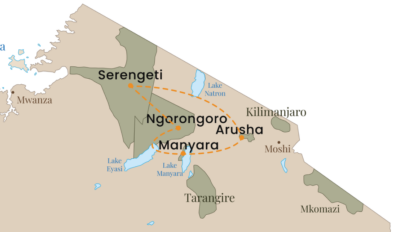
Our added value:
A tailor-made experience
An extra day? This itinerary can be modified according to your wishes, your availability and your budget. Our travel designers are on hand to help you build the safari of your dreams.
Their experience
Merci de nous avoir permis de rencontrer Swedi et Pascal. Ils ont été extraordinaires et nous avons été bluffés de leur gentillesse et de leur professionnalisme. Je n'écris pas ce mail en anglais – ni en swahili ! – mais j'espère que Swedi pourra lui témoigner notre gratitude. Avec du recul nous nous sommes rendu compte qu'il y a seulement 1 mot que nous n'avons pas appris durant ces 10 jours. Et ce mot c'est « s'il te plait » : nous n'avons jamais eu à le dire. Et anecdote notable : Première fois de ma vie que je voyage sans être malade... les précautions sont donc bien prises.
Hugo & Cécile
More information
Oremiti Lodge
Oremiti Lodge is a charming retreat on the shores of Lake Manyara. The lush vegetation, the diversity of birds and butterflies, the sunset and the view of the Rift Valley from the swimming pool are simply unforgettable!
- Room for up to 6 people
- Pool facing the Rift Valley
- Several dining areas
- Lodge on a more intimate scale
- View of Lake Manyara
Tented camp in Serengeti
The great plains of the Serengeti welcome you in superb, cosy tents, fitted out for your utmost comfort: large sleeping area (family tent for up to 5 people), shower room and toilet. You'll enjoy an aperitif while admiring the sunset, followed by an incredible dinner in such a remote location.
- The comfort of a hotel in the heart of nature
- A camp on a human scale
- Inside the Serengeti Park
- Tented restaurant
- Family rooms
The price of a safari in Tanzania depends on the number of participants, since certain costs, such as the vehicle, are shared.
The season is also important, and there is a significant difference in price between high and low season.
We invoice in US Dollars, so please be aware of the conversion rate.
The season is also important, and there is a significant difference in price between high and low season.
We invoice in Dollars US, so please be aware of the conversion rate.
This trip starts at US$4,000 per person for 2 participants in a double room, during the low season.
THE PRICE INCLUDES
- Full service from day 1 to departure transfer
- The entire safari in a private 4×4 Toyota Land Cruiser or Nissan vehicle equipped with radio, water cooler, fridge and sunroof, with a English-speaking guide.
- Full board basis for meals
- Accommodation in the establishments mentioned.
- Government park entrance fees
- Our assistance throughout your stay
THE PRICE DOES NOT INCLUDE
- Flights
- Visa fees
- Insurance
Manyara National Park
Manyara National Park contains a hippo pool and tropical forest, with volcanic soil and a salt lake.
Look out for:
Giraffe - Zebra - Hippopotamus - Lion - Baboon - Birds including ibis, jacanas and flamingos.
Ngorongoro crater
The Ngorongoro Crater contains fresh and salt water, savannah and forest and there are around 100 animals per km2.
Look out for:
Lion - Zebra - Wildebeest - Hyena - Buffalo - Rhinoceros
Serengeti National Park
The Serengeti National Park is one of Africa's largest preserved ecosystems.
Look out for:
Big cats - Elephants - Wildebeest - Gazelles - Zebra
At the end of this trip, you can definitely extend your stay and head for Zanzibar island. This itinerary pairs perfectly with a few days at the beach to complete your discovery of Tanzania.
You can also continue the adventure with a safari in the southern parks of Tanzania.
Frequently Asked Questions


How do I book?
Step 1
Choose a trip that inspires you from our catalog
Step 2
Contact us by requesting a quote on our website
Step 3
Personalize your experience with our travel designers
Step 4
Confirm your reservation and start packing!

